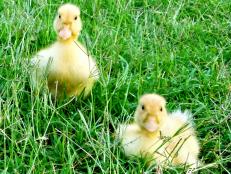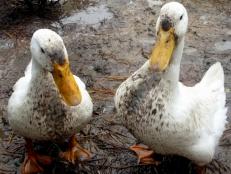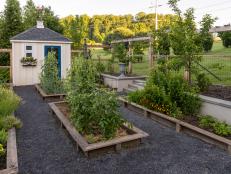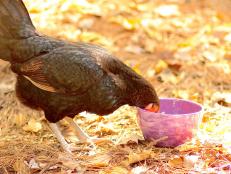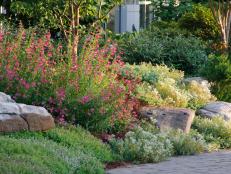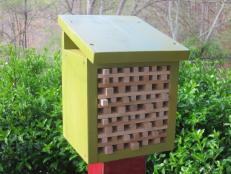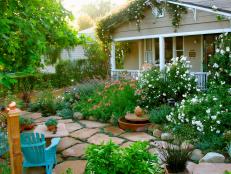Duck Pen Landscaping
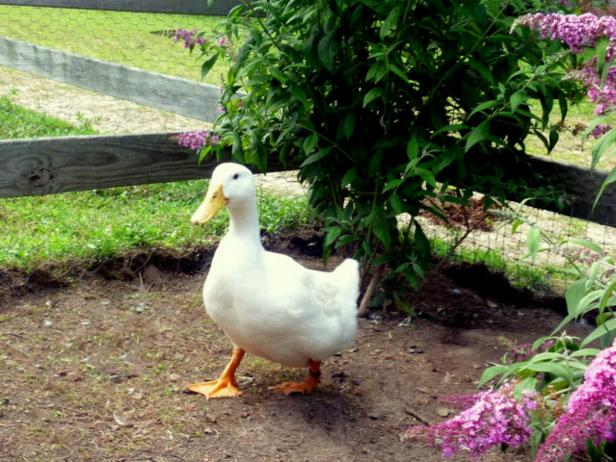
Photo by Lisa Steele
Domestic ducks can’t fly and are terribly unwieldy on the ground, so a covered, enclosed pen is the best way to keep them safe from both aerial and ground predators. But that doesn’t mean it has to look like a prison yard. Landscaping their pen will make it not only more aesthetically pleasing for both you and your neighbors, but also help drown out some of their noise, provide natural wind and sun blocks and give your ducks places to hide out and nap during the day. Vegetation also blocks predators’ view of your ducks which is beneficial.
Your ducks will most likely try to eat anything you plant in their pen, and they can damage young, tender roots with their rummaging in the dirt, so you will want to ring the base of anything you plant with some stones, bricks or cement pavers at least until the plant is established. I stack the pavers a few rows high as well as the plants grow to keep our ducks from nibbling on the lower leaves.
You can also fashion simple cloches out of chicken wire to keep small plants safe from your ducks. Just cut your chicken wire into a square, roll it to make a tube, bend the cut ends to secure the tube, and then fold one end over to create the top. Place a cloche over each plant until it has grown to a height that the ducks can’t reach the top leaves.
Some recommended shrubs and bushes for inside the run include butterfly bushes (which grow fast and provide excellent shade), crepe myrtle, rose bushes (ducks love to munch on the fallen rose petals), hawthorn, juniper and other small evergreen shrubs. You could also plant some blueberry or other berry bushes.
Try planting trailing or climbing vines around the outside of the pen also so the plants can climb up the sides to provide shade. Your ducks will love to nibble on the leaves that grow through the fence but they won’t be able to get to the whole plant or the roots. Some ideas for climbing plants include raspberries, roses, squash, peas, melons, grapes, cucumbers or nasturtium.
Inside the pen you can build raised bed gardens. Make square frames out of boards for your beds and then attach a hinged wooden lid covered with welded wire fencing. Plant some grass seed inside the boxes. Your ducks will love nibbling the grass as it grows through the wire. This way they can’t get to the roots to damage them, so their ‘salad bar’ will continue to produce greens for them. Good choices of grasses include rye, wheat grass or millet.
You can also section off part of the pen periodically and plant grass or leafy greens such as kale, collards, spinach, chard, dandelions etc. Then take down the fencing to let your ducks enjoy the buffet once it’s matured. They should have several days of gorging themselves on the nutritious greens before they’ve decimated the garden and its back to being just dirt, but seeds don’t cost much nor take long to sprout, so a small garden area that you replant every few weeks isn’t expensive and it’s easy to do.
Although any grass or plants originally inside your duck pen when you built it will be long gone before long, with these easy tips you can create an attractive oasis for your ducks that both you and they can enjoy.






